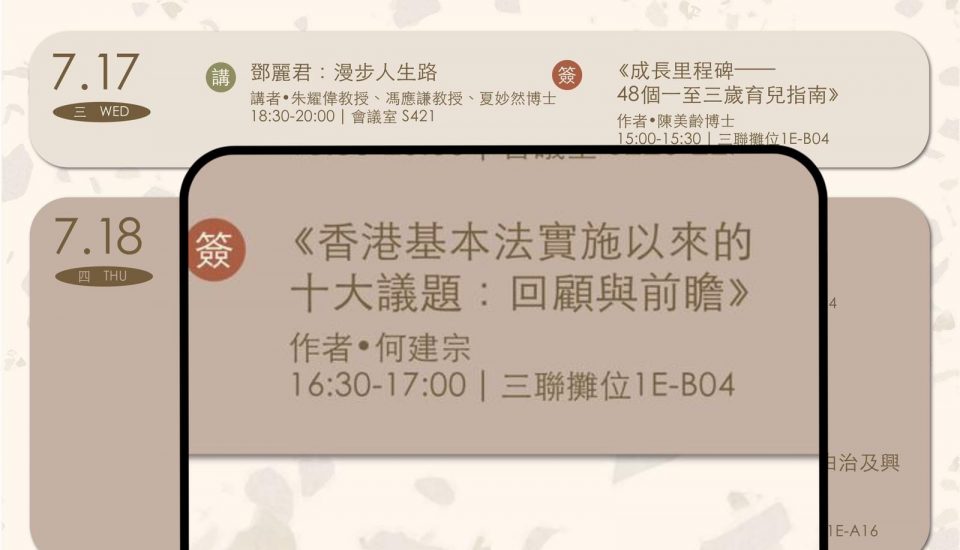Henry Ho: BRI achievements point to bright prospects in next decade

多家媒體關注報道|大灣區十大傑出港生評選2023決賽暨頒獎典禮

本智庫對《行政長官2023施政報告》表示歡迎

The Belt and Road Initiative (BRI) has gone on an exemplary journey over the past 10 years, progressing from an outline sketch to the launch or completion of numerous multibillion dollar infrastructure and investment projects.
The unprecedented project promotes mutual development and prosperity by enhancing connectivity between Asia, Europe, Africa and Latin America and boosting cooperation among participating countries. Over 150 countries and 30 international organizations have signed more than 230 cooperation documents related to the BRI.
To mark the BRI’s 10th anniversary, leaders and representatives from around 140 countries and 30 international organizations gathered in Beijing to participate in the third Belt and Road Forum for International Cooperation last week.
At the forum, President Xi Jinping unveiled an eight-point vision for promoting high-quality Belt and Road cooperation, which includes building a multidimensional Belt and Road connectivity network, establishing pilot zones for Silk Road e-commerce cooperation, promoting integrity-based Belt and Road cooperation, strengthening institutional building for BRI cooperation, and others. China has also committed to providing funding of 700 billion yuan ($96 billion) through the China Development Bank and the Export-Import Bank of China to support projects involved in the BRI, while an additional 80 billion yuan will be injected into the Silk Road Fund to foster Belt and Road cooperation.
The China-Europe Railway Express has become increasingly significant in the Eurasian hinterland; it will further unlock the development potential in BRI participating countries. As one of the world’s longest freight train networks, the China-Europe Railway Express has served as a pipeline for China’s imports and exports of goods to and from Central Asia and Europe. President Xi said at the forum that China will speed up high-quality development of the China-Europe Railway Express. As an alternative to maritime and air traffic, the express trains travel along diverse routes, transporting goods from different Chinese cities via Russia or Central Asian countries such as Kazakhstan, to European nations such as Germany, the Netherlands and Spain. According to China’s State Council Information Office’s recent white paper titled “The Belt and Road Initiative: A Key Pillar of the Global Community of Shared Future”, the express rail has already reached over 200 cities in 25 European countries, comprising 86 routes passing through the main regions of the Eurasian hinterland. By the end of June, the total volume of the freight express surpassed 74,000 trips, carrying nearly 7 million TEUs (20-foot equivalent units) and over 50,000 types of goods with a total value of more than $300 billion. The railway has galvanized trading and economic development between China and Europe.
To counter some Western countries’ unsubstantiated claims about possible graft involved in Belt and Road projects, China and other BRI participants have refuted such skepticism and accentuated integrity and clean governance in carrying out the projects. China and all other participating countries have pledged to adhere to principles of integrity, transparency and fairness. China, together with other participating countries, will release Achievements and Prospects of Belt and Road Integrity Building; and High-Level Principles on Belt and Road Integrity Building, which are expected to elaborate on anti-corruption measures having been implemented or to be implemented by BRI participants. The white paper emphasized that clean governance is an intrinsic and necessary condition for the sustained development of the BRI. All participating countries have made concerted efforts to combat corruption, strengthen their legal systems and mechanisms, laws and regulations, and foster international cooperation. It is imperative for participating countries and businesses involved in BRI projects to uphold the principle of integrity and embrace a zero-tolerance stance against graft.
China and other BRI participants have been steadily expanding cultural exchanges. Participating countries have conducted extensive exchanges and cooperation in education, technology, culture, media and other fields. They have also promoted the development of tourism; for instance, some of them have developed cultural tourism to entice visitors. People-to-people exchanges are the cornerstone for deepening Belt and Road cooperation in the future.
Meanwhile, the BRI is nothing like the US’ Marshall Plan, which was proposed by then-US secretary of state George Marshall after World War II. In the guise of offering economic aid to Western Europe, the Marshall Plan was allegedly intended to help the US gain control of the continent and facilitate American enterprises to become major suppliers in infrastructure and business projects in Europe. Unlike the Marshall Plan, the BRI imposes no political conditions and ideologies on partnering countries — which is open to countries seeking to pursue mutual development and economic growth. It emphasizes inclusiveness and mutually beneficial cooperation among participating countries.
In their attempt to derail the BRI, some Western countries and media outlets have tried to discredit the initiative by peddling the “debt trap” narrative.
The fact is the BRI projects financed or supported by China have been warmly welcomed by participating nations.
The Jakarta-Bandung High-speed Railway — which connects Indonesia’s capital, Jakarta, with the city of Bandung — is a landmark project jointly built by China and Indonesia under the BRI, which has fully leveraged China’s rail technology.
Instead of creating a “debt trap” for Indonesia, the mega railway is projected to generate huge revenues for the Indonesian government over the next few decades.
The Hong Kong Special Administrative Region government can make the best use of the city’s global connectivity to play a significant role in promoting the BRI. Addressing hundreds of participants in a symposium at the forum, Chief Executive John Lee Ka-chiu highlighted Hong Kong’s superconnector role in linking the country with the rest of the world, which can come into play in facilitating the BRI.
Hong Kong can contribute to the progress of the BRI by leveraging its strength in financing, legal services, architecture, engineering, accounting and other professional services.
Hong Kong’s think tanks can contribute to the development of the BRI by offering their wisdom. China and partnering countries will strengthen the building of multilateral cooperation platforms including think tanks. Think tanks in the international community and Hong Kong can play a bridging role to connect governments, businesses and academic fields to foster Belt and Road cooperation. In the past few years, there have been frequent academic exchanges, forums and studies organized by think tanks in participating countries. The think tanks have cultivated talent and experts to contribute to the Belt and Road projects.
BRI participants have gained from fruitful cooperation over the past decade; the initiative offers bright prospects for them in the next decade as it progresses.
The author is a member of the Beijing Municipal Committee of the Chinese People’s Political Consultative Conference, and founder and chairman of the One Country Two Systems Youth Forum.
The original article was published in China Daily. ( Oct 25, 2023)




